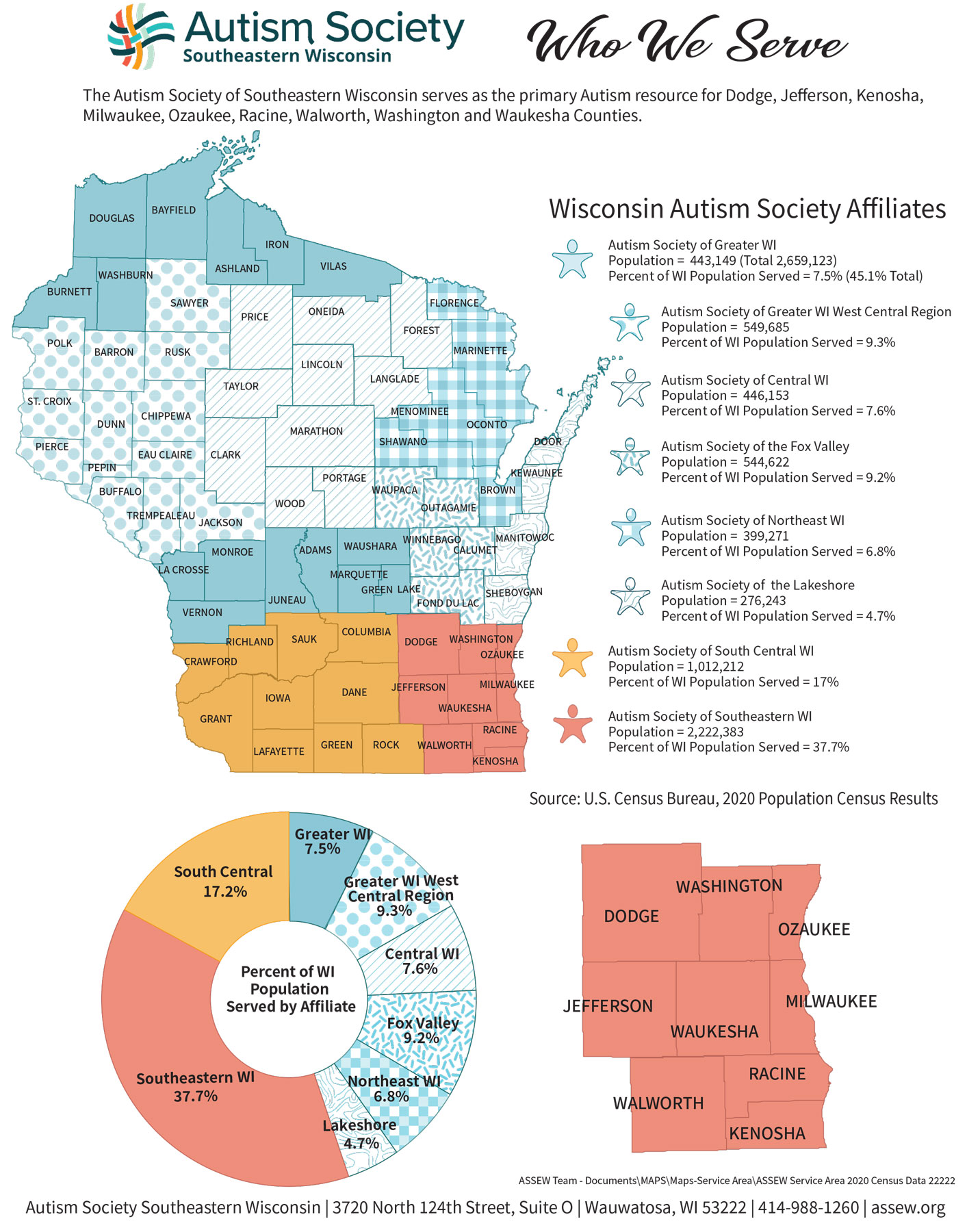Get to know the Autism Society of Southeastern Wisconsin

Our Mission and Vision
The Autism Society of Southeastern Wisconsin’s mission and vision is to create connections, empowering everyone in the Autism community with the resources needed to live fully. Our focus is to improve the lives of all affected by Autism Spectrum Disorder. We exist to serve our local Autism community through advocacy, community programming, and creating a more inclusive world. We do this by increasing public awareness about the day-to-day issues faced by persons on the spectrum, advocating for appropriate services for individuals across the life span, and providing the latest information regarding treatment, education, research and advocacy.
The Autism Society of Southeastern Wisconsin is the state’s largest affiliate of the Autism Society of America — serving nine counties and more than 6,000 families, care providers and educators.
Together with our community, we serve as the primary resource for the nine counties in our service area: Dodge, Jefferson, Kenosha, Milwaukee, Ozaukee, Racine, Walworth, Washington and Waukesha.
We believe that each individual with Autism is unique and they — along with their families — should determine the best treatment based on individual needs. This guiding principle is expressed in the national Autism Society’s Options Policy.
Nationwide Recognition
We’re a recognized United States not-for-profit 501(c)3 organization, meaning all support is tax-deductible as prescribed by law (consult your tax attorney). Our operating budget for fiscal year 2023 will approach $900,000.

Our Long-Term Goals
As a community, we’re passionately focused on the expansion and growth beyond any date on the calendar — but to expand our reach to every family in our community’s service area that needs our support.
Expansion
Significantly expand our scope of services, as well as our geographic reach, particularly for teens and adults on the Autism Spectrum. Make each day better for each Autistic person.
Outreach
Expand our reach of services to families with persons on the Autism Spectrum among the 2.3 million people who live in our nine-county service area. Or: no Autistic left behind.
Budgeting
Increase ASSW annual operating budget $50,000 per year over the next three years, accomplishing a funding goal of “50,000 Cheers for 50 Years” (2025 being the 50th Anniversary of ASSW).
Disclaimer: Please note this information is not a substitute for a comprehensive, medical diagnostic assessment.
Contact Us if you need more information about Autism including where in this area to secure an assessment, or Click Here to see a listing of Diagnosis & Assessment Professionals in our Resource Directory.

